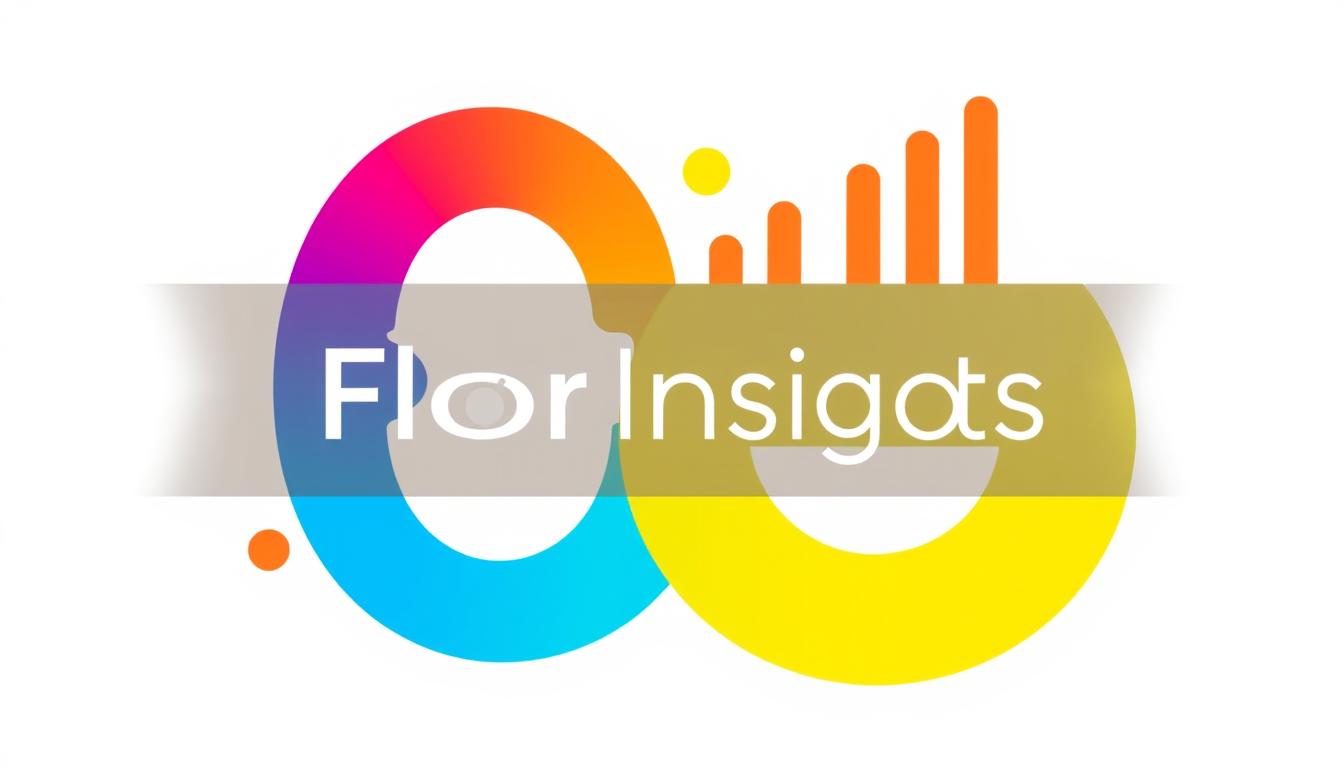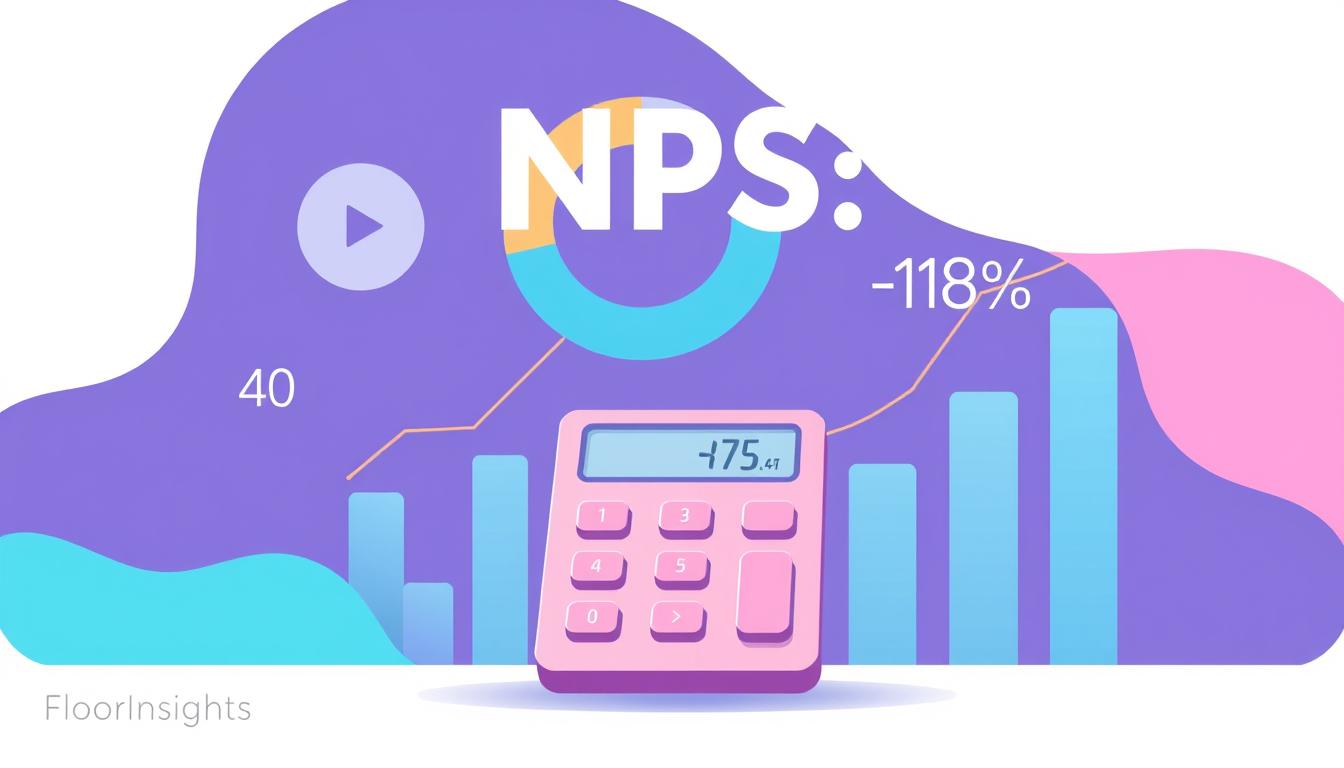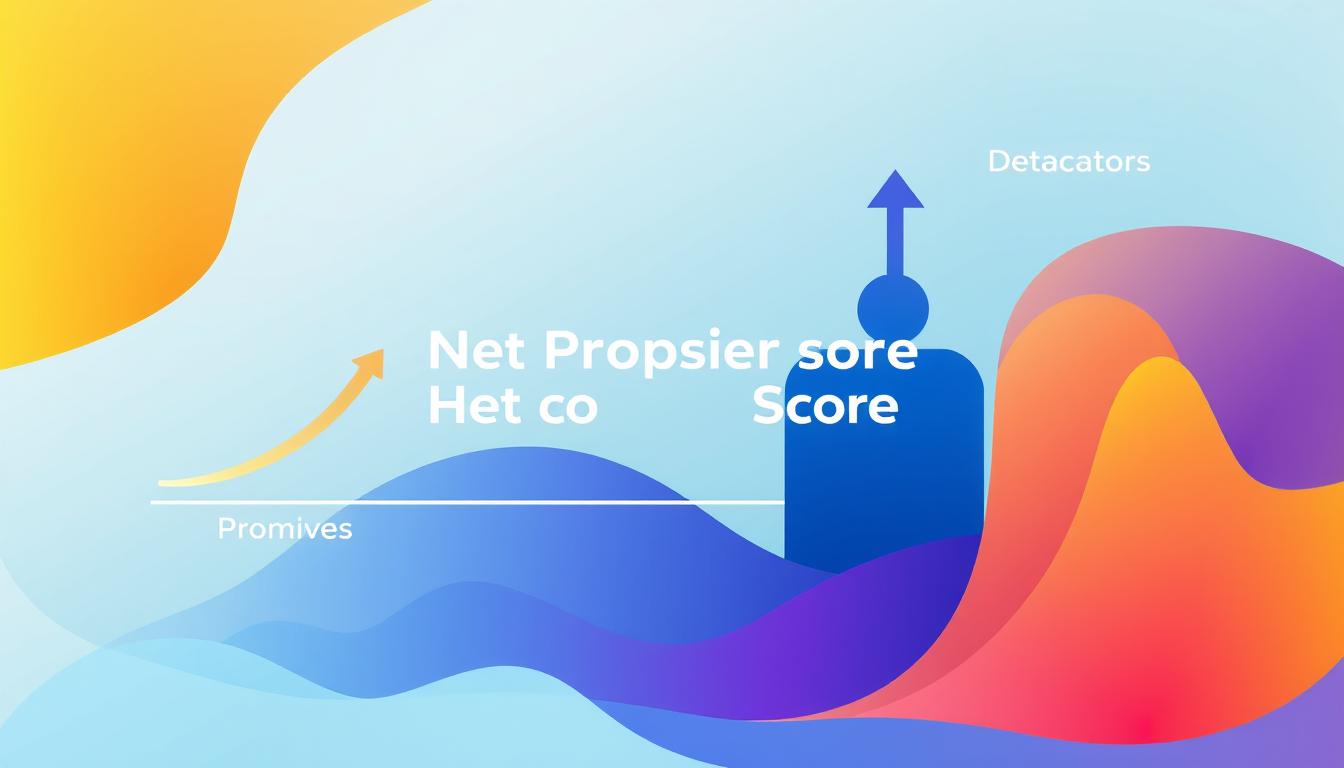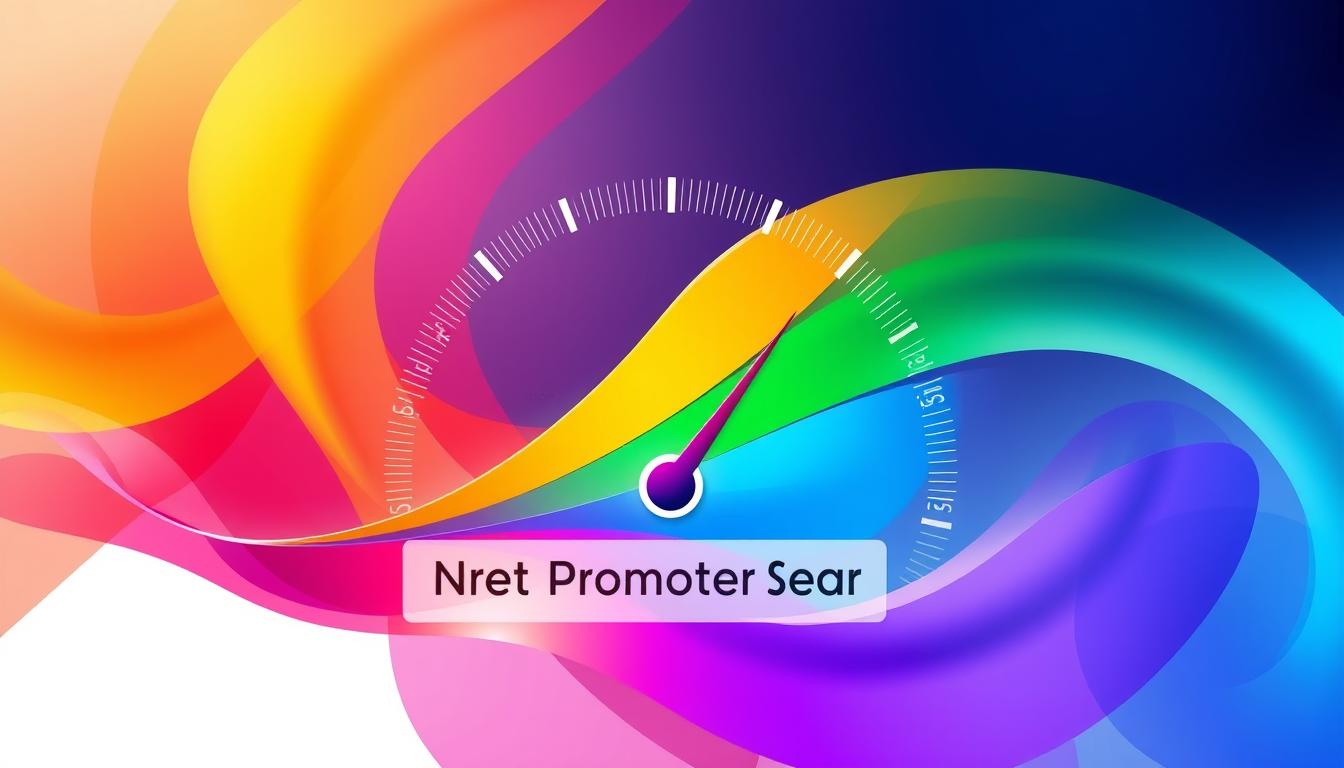In today’s competitive market, we recognize that understanding how to leverage the Net Promoter Score (NPS) is essential for small and medium businesses (SMBs) in India. This article serves as a comprehensive guide to utilizing NPS methodologies and insights to drive customer engagement. By utilizing NPS, SMBs can gauge customer loyalty through quantitative measurement techniques, allowing us to create targeted strategies that enhance our offerings and foster meaningful interactions with our customers.
Key Takeaways
- NPS helps SMBs measure customer loyalty effectively.
- Understanding NPS feedback can drive improved customer engagement.
- The net promoter survey provides insights for better service delivery.
- Implementing NPS strategies fosters stronger customer relationships.
- Combining NPS with other metrics enhances overall customer satisfaction.
Introduction to Customer Engagement and NPS
Customer engagement plays a vital role in the relationship between our company and its customers. This emotional connection significantly influences retention, loyalty, and overall satisfaction. By fostering strong customer engagement, we can drive more meaningful interactions and build a lasting rapport with our clients.
To effectively measure customer engagement, the Net Promoter Score (NPS) serves as a powerful tool for SMBs. NPS captures customer feedback, allowing us to gain insights into how our services are perceived. This measurement acts as a vital indicator of customer satisfaction and loyalty, helping us identify areas that need attention.
Engaging customers effectively can lead to numerous benefits, including increased revenue and stronger brand loyalty. Research highlights that businesses with high levels of customer engagement experience a more significant market presence, particularly in India’s thriving economy.
Understanding the Net Promoter Score
The Net Promoter Score (NPS) serves as a vital metric that helps us gauge customer loyalty and satisfaction levels. By conducting an NPS survey, we collect feedback from customers through a single question: “On a scale from 0-10, how likely are you to recommend our company to a friend or colleague?” This structured approach categorizes respondents into three groups: Promoters (score 9-10), Passives (score 7-8), and Detractors (score 0-6). Such classification allows us to discern customer sentiment and identify potential brand advocates or dissatisfied customers.
What is Net Promoter Score?
The Net Promoter Score is a simple yet effective method for measuring customer engagement. By utilizing various net promoter surveys, we can efficiently assess customer attitudes. An advantage of NPS lies in its ability to highlight not only how customers view our products or services but also their likelihood to engage in word-of-mouth promotion, which strongly influences market presence. This metric streamlines our approach in correlating customer interactions with overall satisfaction.
Importance of NPS for SMBs
The importance of NPS cannot be overstated for small and medium businesses (SMBs). A high NPS indicates robust customer satisfaction, signaling a solid foundation for growth and potential market expansion. Satisfied customers often serve as brand ambassadors, thereby attracting new clientele. Moreover, by identifying areas for improvement through the NPS, we can refine our SMB strategy and enhance service delivery. Understanding this metric places us in a stronger position within the competitive landscape of the Indian market.
Benefits of Using NPS for Small and Medium Businesses
NPS serves as a powerful tool for enhancing our understanding of customer relationships. By utilizing this metric, we can significantly aid in improving customer loyalty while also identifying vital areas for improvement within our offerings.
Improving Customer Loyalty
We recognize that improving customer loyalty is crucial for long-term success. Analyzing NPS feedback provides us valuable insights into our customers’ sentiments. By focusing on responses from detractors, we can devise strategic initiatives aimed at transforming their negative experiences into positive ones. This process ultimately fosters greater customer retention, ensuring that our clients remain engaged and satisfied with our products and services.
Identifying Areas for Improvement
Utilizing NPS feedback effectively allows us to pinpoint specific areas for improvement in our business. The data collected through customer satisfaction surveys highlight weaknesses that we might not otherwise notice. Understanding these pain points helps us make targeted adjustments to our offerings. Monitoring NPS over time creates a framework for continuous improvement, reinforcing our commitment to enhanced customer experiences and satisfaction.
How to Implement Net Promoter Surveys
Successfully implementing a net promoter survey requires careful attention to both design and distribution. We aim to create a system that not only gathers effective customer feedback but also encourages participation through thoughtful outreach and engagement strategies.
Designing Your NPS Survey
Effective designing NPS survey processes emphasize clarity and brevity. Our surveys should primarily focus on the core NPS question while allowing space for additional open-ended responses. This approach provides necessary insights into the reasons behind customer sentiments. Including a few demographic questions, such as age or location, can enrich the context of responses, enhancing our understanding of overall trends in customer satisfaction.
Best Practices for Survey Distribution
The success of our NPS outreach hinges on effective survey distribution. By using multiple channels such as email, SMS, and social media, we can reach a broader audience. Timing also plays a crucial role; sending out surveys shortly after interactions or purchases keeps the feedback relevant and immediate. To further motivate responses, we should consider implementing incentives like discounts or small rewards, making it easier for customers to engage with our customer satisfaction survey.
Collecting and Analyzing NPS Feedback
Once we gather feedback, our next crucial task revolves around analyzing responses. This process plays a vital role in understanding our Net Promoter Score (NPS) and the sentiments behind it. By conducting thorough NPS feedback analysis, we can compute the overall score and categorize it by relevant demographics or transaction types. This segmentation aids in discovering trends and patterns that may not be apparent in the aggregated data alone.
Analyzing Responses Effectively
A comprehensive approach to net promoter score interpretation involves not only quantifying the score itself but also delving into the qualitative feedback provided by our customers. This feedback frequently holds priceless insights into their feelings and expectations towards our service. Engaging with these comments equips us with a better understanding of the customer experience and enables us to segment our feedback for more targeted and impactful analysis.
Using Feedback to Drive Improvement
Implementing feedback derived from our NPS insights significantly enhances our efforts to drive improvement across various operational areas. Revisiting service delivery methods, refining product lines, or boosting customer support are essential steps we can take based on the feedback collected. By actively responding to direct customer suggestions, we nurture a culture of responsiveness that strengthens customer loyalty and trust.
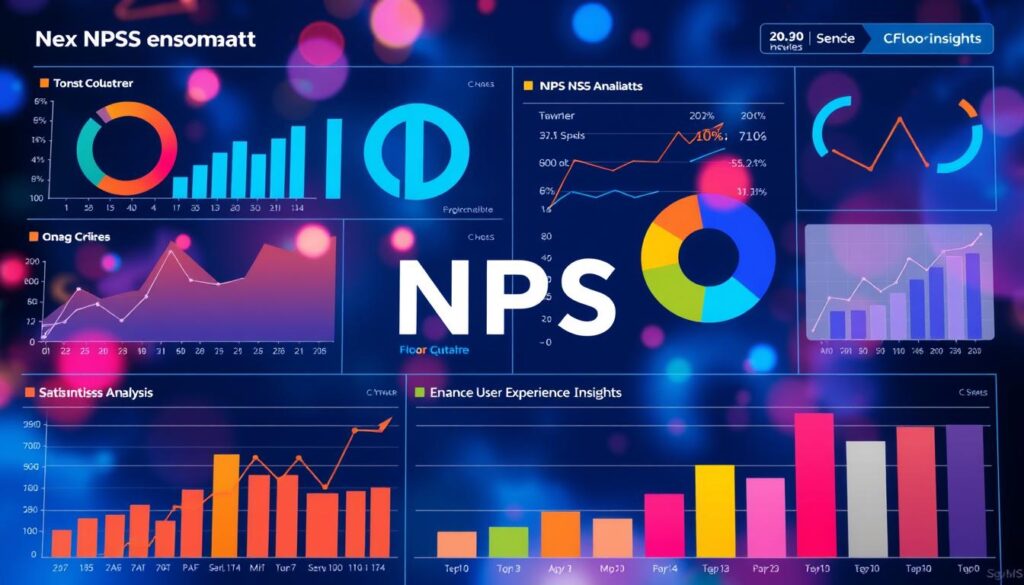
| Feedback Type | Insights Gained | Action Taken |
|---|---|---|
| Positive Responses | Identified key strengths in service | Celebrate achievements and maintain performance standards |
| Neutral Responses | Highlighted areas needing attention | Conduct in-depth assessments for targeted enhancements |
| Negative Responses | Uncovered significant pain points | Implement immediate changes to address issues |
Integrating NPS with Other Customer Satisfaction Measurements
Our approach to customer satisfaction measurement can significantly benefit from integrating various metrics. By combining NPS with CSAT surveys, we can attain comprehensive insights into our customers’ sentiments. This integration aids in recognizing not just loyalty but also satisfaction experienced at different interaction points.
Combining NPS with CSAT Surveys
Utilizing NPS with CSAT surveys provides a more nuanced understanding of customer perceptions. While NPS reflects overall loyalty, CSAT captures satisfaction tied to specific touchpoints. This dual approach allows us to:
- Identify key moments that contribute to satisfaction.
- Pinpoint areas that require improvements.
- Enhance our customer journey, aligning it better with expectations.
By leveraging integrated customer feedback, we can create targeted strategies to promote customer loyalty and satisfaction.
Understanding Customer Effort Scores (CES)
Customer Effort Scores play a crucial role in measuring the ease with which customers interact with our services. CES score helps us gauge how difficult or simple customers find their experiences. Emphasizing this can lead us to streamline processes, thus enhancing their overall journey. The insights derived from customer effort score surveys help us:
- Reduce friction in the customer experience.
- Refine our service offerings based on customer feedback.
- Boost satisfaction and loyalty by simplifying interactions.
By incorporating both NPS and CES into our feedback strategy, we gain a multifaceted view of customer satisfaction. This not only equips us with the ability to refine offerings but also fosters a deeper relationship with our customers.
Leveraging NPS to Enhance Customer Experience
NPS plays a crucial role in understanding and improving the customer experience we offer. This metric allows us to continuously gauge customer satisfaction by gathering feedback directly from our clientele. By regularly analyzing the NPS impact on service, we can identify pain points and areas where our organization can improve. This ongoing assessment is vital for fostering a customer-centric culture.
In the competitive landscape of India, enhancing customer experience is not just advantageous but necessary for the survival of SMBs. Focusing on delivering exceptional service leads to greater customer satisfaction. Satisfied customers are more likely to engage in repeat business, which is essential for growth and sustainability. By leveraging NPS effectively, we can strengthen our relationship with customers and build loyalty over time.
To further illustrate the benefits, we’ve compiled a table detailing various strategies we can implement to leverage NPS for enhancing customer experience:
| Strategy | Expected Outcome |
|---|---|
| Regular NPS Surveys | Continuous feedback on customer satisfaction |
| Acting on Feedback | Improved services leading to higher customer loyalty |
| Personalizing Customer Interaction | Greater customer engagement |
| Training Staff Based on NPS Feedback | Enhanced service quality |
| Tracking NPS Trends Over Time | Long-term improvement in customer satisfaction |
Implementing these strategies can significantly enhance the customer experience, ensuring that we remain competitive and responsive to our customers’ needs.
Case Studies: Successful NPS Implementation by SMBs
Exploring case studies of Indian SMBs reveals valuable insights about successful NPS implementation. These businesses exemplify how feedback can shape strategies and enhance customer engagement. By analyzing their approaches, we discover lessons that can benefit other SMBs aiming for effective customer interaction.
Examples from Indian SMBs
Two notable examples of Indian SMBs that have successfully utilized NPS are Zomato and Freshworks. Zomato has leveraged NPS to collect feedback systematically, allowing them to refine their marketing strategies and enhance user experience. Their regular engagement with customers through NPS surveys has paved the way for tailored campaigns based on customer preferences.
Freshworks took a different approach by focusing on product development. By implementing NPS, they continuously gathered insights from users, which led to improvements in their software offerings. This strategy significantly boosted customer satisfaction and loyalty.
Lessons Learned from Case Studies
The journeys of these Indian SMBs highlight critical lessons in the realm of customer engagement. Regular feedback loops emerge as essential for understanding customer needs and preferences. Transparency plays a vital role, as businesses that keep customers informed about how their feedback influences decisions foster trust. The commitment to actively responding to customer input not only enhances relationships but also drives long-term success.
| SMB | NPS Implementation Focus | Positive Outcomes |
|---|---|---|
| Zomato | Marketing Strategies | Enhanced campaigns, increased customer engagement |
| Freshworks | Product Development | Improved software offerings, higher customer satisfaction |
Challenges in Using NPS for SMBs
Implementing NPS presents a range of challenges, particularly for SMBs that often grapple with limited resources and expertise in data analysis. The challenges in NPS become evident when organizations misinterpret results, leading to misguided strategies that don’t address customer needs effectively.
We face several SMB hurdles when striving for accurate NPS implementation. For instance, achieving a high response rate requires consistent and engaged outreach to customers, which can be resource-intensive. Many SMBs lack the personnel or technological support to maintain ongoing communication necessary for sustaining customer feedback loops.
Alongside operational challenges, understanding the intricacies of NPS limitations plays a crucial role in effective usage. Inconsistent data collection methods might skew the score, resulting in a false sense of customer loyalty. Without careful analysis, we risk overlooking vital customer insights that hinder our performance.
To address these challenges, investing in NPS training and integration within broader customer experience management strategies becomes essential. By acknowledging NPS limitations, we can refine our approach, fostering a deeper understanding of our customers and enhancing their overall experience.
Conclusion
In conclusion, leveraging the Net Promoter Score (NPS) offers us a powerful framework for enhancing SMB customer engagement and achieving overall customer satisfaction. By systematically implementing NPS surveys and diligently analyzing customer feedback, we can unearth insights that drive loyalty and foster better relationships with our clientele. Understanding what drives customer sentiment is essential in today’s competitive landscape.
Moreover, by integrating NPS with other customer satisfaction measurement tools, we can gain a comprehensive view of our customers’ needs and expectations. This multi-faceted approach not only helps us identify areas for improvement but also solidifies our commitment to responding effectively to customer insights. The ongoing dedication to nurturing these relationships is crucial in ensuring sustainable growth within India’s dynamic market.
Ultimately, our focus remains on continuously enhancing our customer engagement initiatives through actionable NPS conclusions. As we strive for excellence, the insights derived from NPS will be instrumental in guiding our strategic decisions and enriching the overall customer experience.
FAQ
What is the Net Promoter Score (NPS)?
The Net Promoter Score (NPS) is a standardized metric used to gauge customer loyalty by asking customers how likely they are to recommend our company to friends or colleagues on a scale of 0 to 10. Responses categorize customers into Promoters, Passives, and Detractors, offering insights into their satisfaction levels.
Why is NPS important for small and medium businesses (SMBs)?
How do we effectively implement net promoter surveys?
To implement net promoter surveys effectively, we must design concise surveys that focus on the core NPS question, along with open-ended feedback options. Distributing surveys through multiple channels and at the right time, such as shortly after customer interactions, is essential for maximizing response rates.
How can we analyze NPS feedback for actionable insights?
Analyzing NPS feedback involves calculating the overall NPS score and segmenting it by demographics or transaction types. By interpreting both quantitative scores and qualitative comments, we can identify trends and make informed decisions to enhance customer experience.
What are CSAT surveys, and how do they integrate with NPS?
What challenges might SMBs face when using NPS?
How can we leverage NPS to enhance customer experience?
Leveraging NPS involves continuously assessing customer feedback to maintain a customer-centric culture. By acting on insights gathered, we can improve overall customer experiences, leading to increased satisfaction, engagement, and repeat business.
Can you provide examples of successful NPS implementation by SMBs?
Yes, companies like Zomato and Freshworks have successfully implemented NPS to gather customer feedback and drive engagement. Their initiatives showcase the importance of regularly integrating customer insights into strategies for enhancing satisfaction and loyalty.
How do we ensure our NPS survey receives high response rates?
To ensure high response rates for our NPS survey, we should distribute them through various channels like email, SMS, and social media. Timing is key, so sending surveys shortly after interactions and offering incentives can significantly boost participation.
Related Posts
- The Role of NPS in Omnichannel Customer Experience
- Personalizing Customer Journeys Based on NPS Feedback – NPS and Personalization
- How to Use NPS Data to Personalize Customer Interactions
- NPS for Tech Companies: Key Success Factors – NPS in the Technology Industry
- The Role of NPS in CRM Automation – NPS in Customer Relationship Management (CRM)
- The Role of Onboarding in Shaping NPS Scores – NPS and Customer Onboarding
- Using NPS to Identify Onboarding Weaknesses – NPS and Customer Onboarding
- How to Turn NPS Promoters Into Loyalty Program Members – NPS and Loyalty Programs

